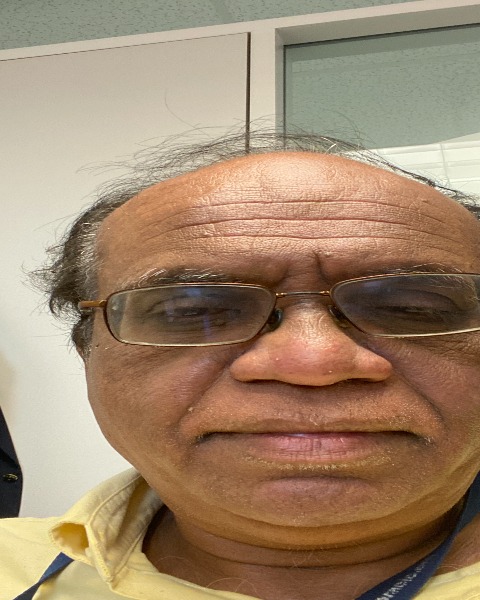Neonatal Pulmonology
Neonatal Pulmonology 1: Lung Development, Control of Breathing
252 - Maternal Exposure to Polycyclic Aromatic Hydrocarbons (PAHs) Augments Neonatal Hyperoxic Lung Injury: Mechanistic Roles of Cytochrome P450 (CYP)1A1, 1A2, and 1B1
Publication Number: 252.339

Bhagavatula Moorthy, Phd (he/him/his)
Professor
Baylor College of Medicine
Houston, Texas, United States
Presenting Author(s)
Background:
Pregnant women exposed to high levels of polycyclic aromatic hydrocarbons (PAHs) are at increased risk for preterm birth (PTB), which could lead to bronchopulmonary dysplasia (BPD) in preterm infants. Cytochrome P450 (CYP) 1A and 1B enzymes have been implicated in lung injury, but the impact of prenatal exposure to PAHs on CYP1A and CYP1B1 expression and neonatal lung injury is not known.
Objective:
: In this investigation, we tested the hypothesis that prenatal administration of PAHs [mixture of benzo[a]pyrene (BP) and benzo(b)fluoranthene (BbF)] differentially exacerbates lung injury and alveolar simplification in neonatal mice following postnatal hyperoxia, and that this effect is altered in mice lacking the gene for cytochrome P450 (Cyp)1a1,1a2, or 1b1.
Design/Methods:
: Timed pregnant wild type (WT) (C57BL/6J), Cyp1a1-null, Cyp1a2-null, and Cyp1b1-null mice (n=4 dams for each group) were treated orally with vehicle corn oil (CO) or a mixture of PAHs BP and BbF (7.5-30 mg/kg each) on gestational days 16-19. Newborn mice (n=24/group) were exposed to hyperoxia (80% O2) or room air for 14 days from postnatal day (PND)1-14. Mice were euthanized on PND15, and lung injury was assessed by radial alveolar count (RAC) and mean linear intercept (MLI). Data were analyzed using 2- way ANOVA with Bonferroni post-hoc pairwise comparisons, and P < 0.05 was considered statistically significant.
Results:
Alveolar simplification was increased by prenatal PAH exposure in a dose-dependent manner, with a dose of 30 mg/kg producing the maximum injury (P< 0.001). This effect was differentially altered in Cyp1a1-null, Cyp1a2-null and Cyp1b1-null mice, with Cyp1a2-null showing the greatest extent of lung injury (P< 0.05). Under normoxic conditions, PAHs caused 1000-, 1500-, and 60-fold induction of Cyp1a1 gene expression in WT, Cyp1a2-null, and Cyp1b1-null mice, respectively; however, there was a significant decline of Cyp1a1 induction under hyperoxic conditions. In contrast, exposure to prenatal PAHs and postnatal hyperoxia led to 7-8-fold induction of Cyp1b1 gene expression in newborn WT, Cyp1a1-null, and Cyp1a2-null mice.
Conclusion(s): In summary, newborn mice exposed to PAH in utero displayed more significant lung injury in response to hyperoxia than vehicle-exposed pups, with the liver-specific Cyp1a2-null mice being the most susceptible. Lung injury in PAH-exposed hyperoxia group was associated with decrease of Cyp1a1 and increase of Cyp1b1, suggesting opposing roles of these enzymes in PAH-mediated lung injury.
